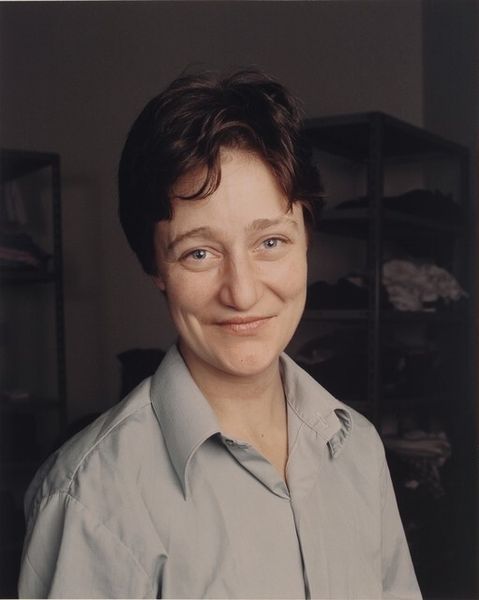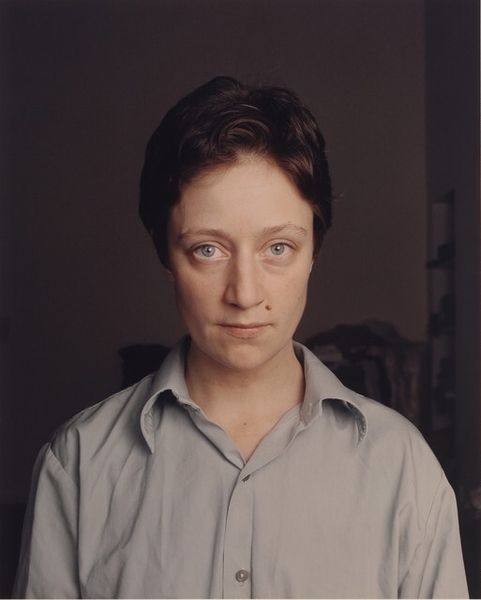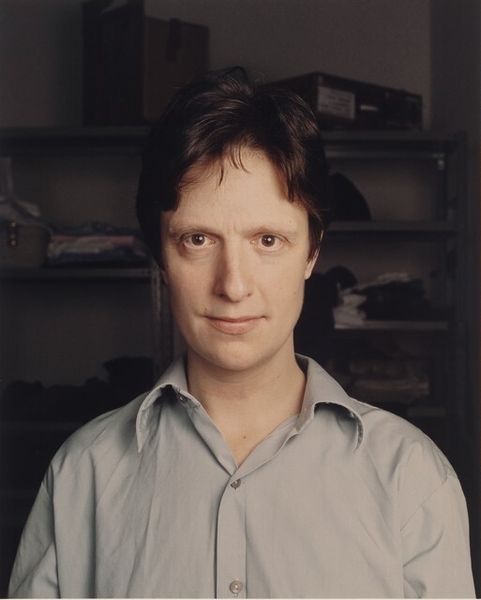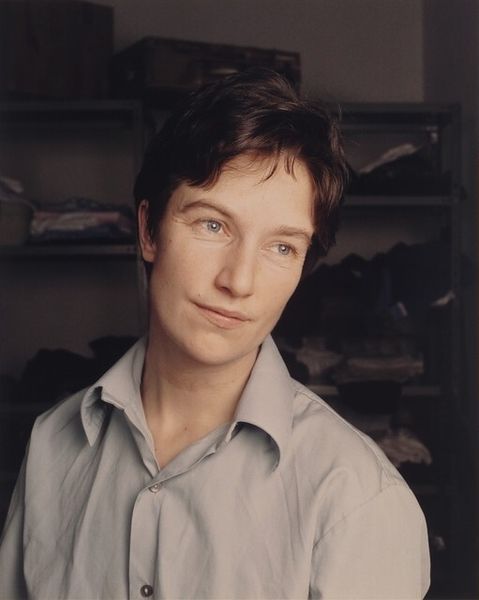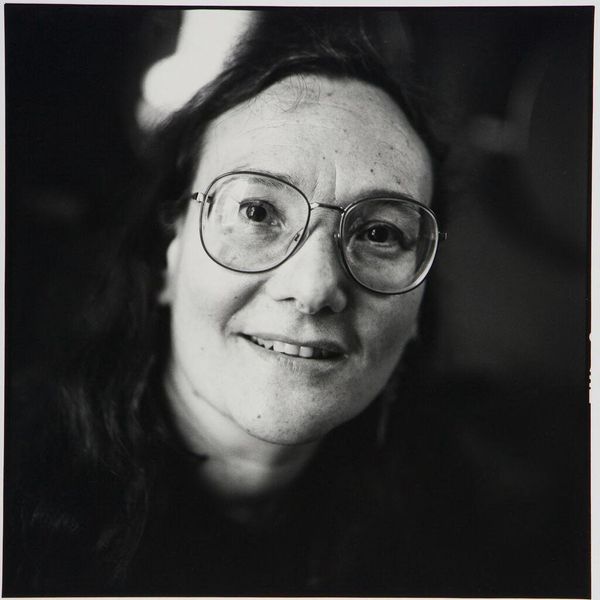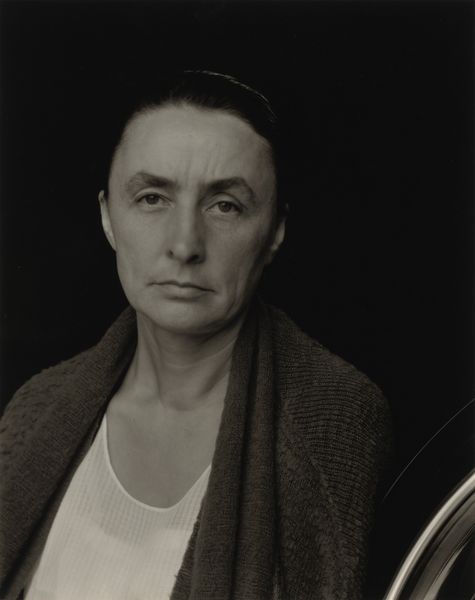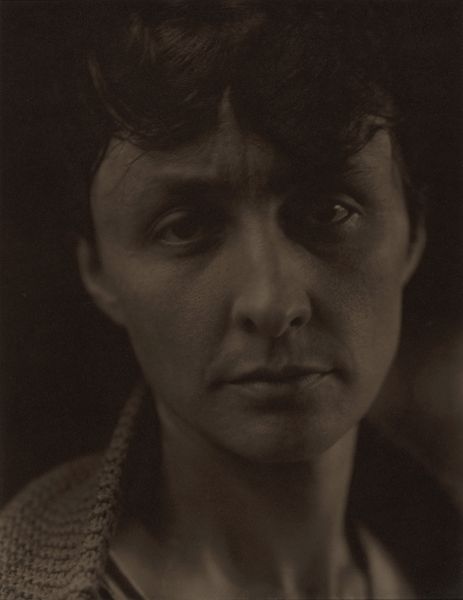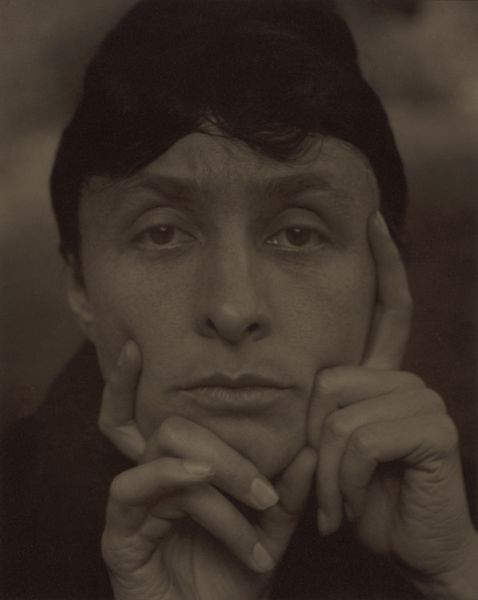
c-print, photography
#
portrait
#
contemporary
#
c-print
#
photography
#
historical photography
#
single portrait
#
modernism
#
portrait photography
Dimensions: image: 45.7 x 36.6 cm (18 x 14 7/16 in.) sheet: 46.4 x 37.3 cm (18 1/4 x 14 11/16 in.)
Copyright: National Gallery of Art: CC0 1.0
Curator: Vibeke Tandberg created "Faces #2" in 1998. This is a c-print photograph. What are your first thoughts? Editor: Intimacy, mostly. The composition is close and direct. The cool-toned palette gives the image a certain austerity, almost like a historical document, but the slight smile complicates that impression. Curator: Absolutely. The historical context is interesting here, particularly how Tandberg explores constructed identities, using portraiture—a historically charged genre—to challenge notions of authenticity. Her focus often revolves around gender and performance. Editor: You can certainly see the deliberate use of form here. The tight cropping, the flattening effect of the lighting…it all draws your eye to the very subtle asymmetries of the face, the slight droop of one eyelid, the uneven set of the mouth. It’s a portrait built from nuanced detail. Curator: I think those 'flaws' are central. Tandberg is interested in the representation of the self, not in idealization. The androgynous presentation also plays with expectations; is this 'woman' performing masculinity? What is truly visible, and what is carefully curated? Editor: There is a certain flatness to the presentation; even the background is visually uninteresting, adding to a somewhat neutral effect. It pushes you as a viewer to question how you might typically ascribe traits or narratives based on the subject and setting. Curator: Precisely! And let’s think about the photographic medium. It’s almost too easy to assume photographs reflect ‘truth,’ but Tandberg skillfully reveals that the photograph itself is a highly constructed image, rife with choices. Editor: Agreed. In essence, it challenges us to recognize the formal mechanics at play. From a distance, one might assume they are viewing something simple, maybe spontaneous even. Curator: So, ultimately, while my impulse is to consider identity, politics and performance, you are grounded in a formal deconstruction. Both views, I think, enrich our understanding. Editor: Indeed. Appreciating both the surface and the depths certainly deepens my reading.
Comments
No comments
Be the first to comment and join the conversation on the ultimate creative platform.

